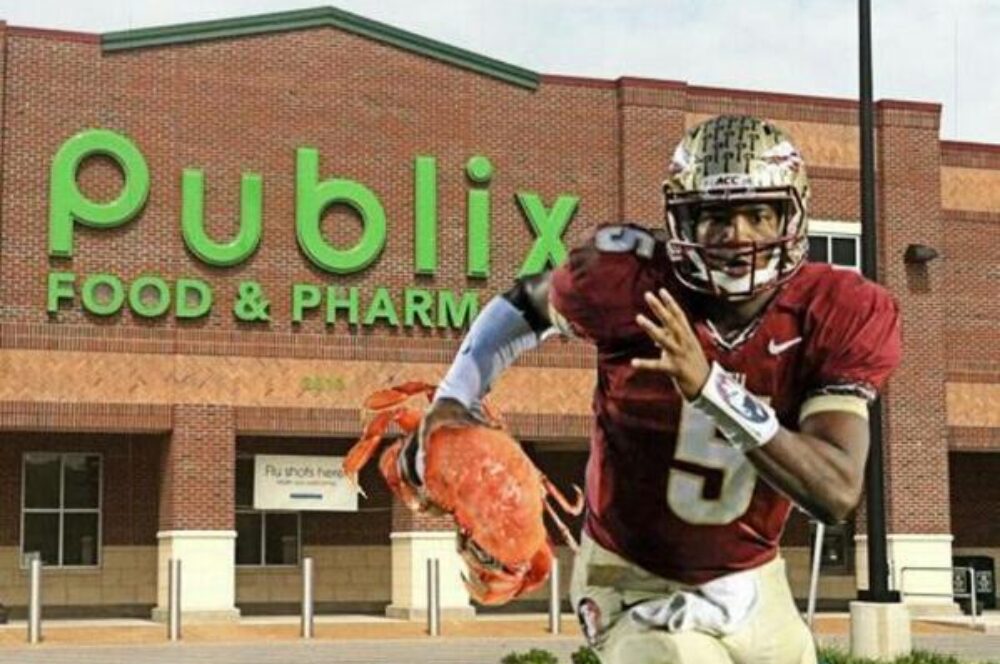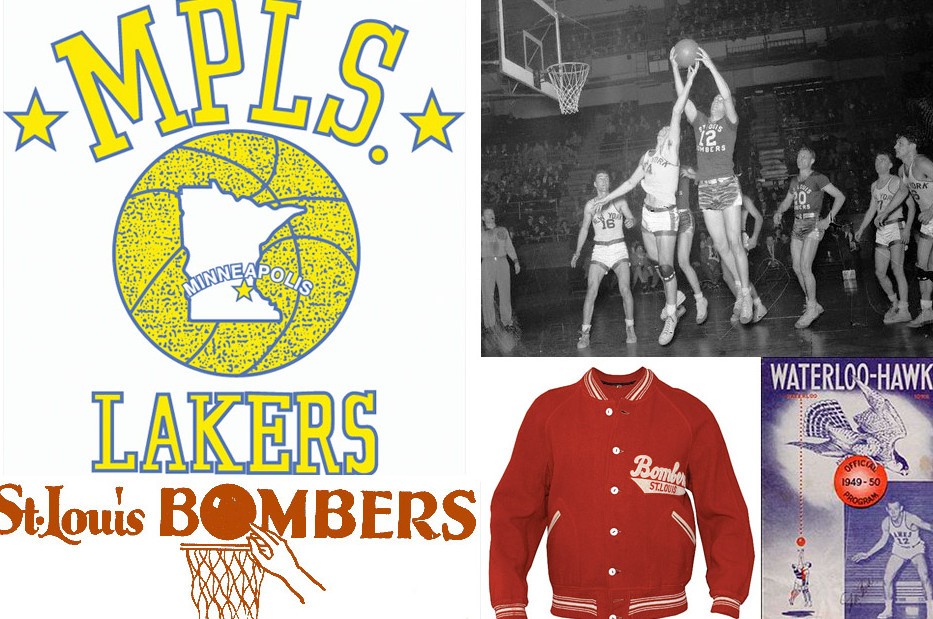NBA Draft – Territorial Picks Era
Synopsis: Throughout its history, the NBA has relied on an assortment of gimmicks to determine how teams could select new players. Well before the use of lotteries and coin flips, the league gave teams a preferential right to select local players who presumably offered a built-in following. This type of draft exemption ended by the mid-1960s, but not before the rule was applied inconsistently for one player. Wanna take a guess?
NBA TERRITORIAL PICKS
Professional basketball in the United States during the late 1940s resembled the Wild West. In particular, the following leagues competed for players and fans alike.
- American Basketball League (founded in 1922).
- National Basketball League (founded in 1937).
- Basketball Association of America (founded in 1946).
- Professional Basketball League of America (founded in 1947).
Out of these four, the BAA proved to be the most successful poaching other teams and attracting college players. As a result, it survived and ultimately became the modern-day NBA. Technically, the NBA resulted from a “merger” of the BAA and NBL in 1949. More accurately, however, the BAA absorbed the remaining pieces of the financially troubled NBL. For this reason, the NBA looks back to the formation of the BAA as its official beginning.
The following table provides a summary of franchises during the NBA’s first 20 years. Before skipping over it too quickly, take a look at some of the great teams names such as the Providence Steamrollers, St. Louis Bombers, and Pittsburgh Ironmen. Each deserves consideration for the league’s next nostalgia night.
NBA TEAMS DURING YEARS OF TERRITORIAL PICKS (1946-1965)
(Current NBA teams in Green)
| Season (# of Teams) |
Added Teams (Current Team Name) |
Subtracted Teams |
| 1946-47 (11 teams) Original Teams from Basketball Association of America (BAA) |
Washington Capitols | |
| Philadelphia Warriors (Golden State Warriors) |
||
| New York Knicks | ||
| Providence Steamrollers | ||
| Boston Celtics | ||
| Toronto Huskies | ||
| Chicago Stags | ||
| St. Louis Bombers | ||
| Cleveland Rebels | ||
| Detroit Falcons | ||
| Pittsburgh Ironmen | ||
| 1947-48 (8 teams) 1 added from American Basketball League (ABL) |
Baltimore Bullets | Toronto Huskies |
| Cleveland Rebels | ||
| Detroit Falcons | ||
| Pittsburgh Ironmen | ||
| 1948-49 (12 teams) 4 teams added from National Basketball League |
Fort Wayne Pistons (Detroit Pistons) |
|
| Indianapolis Jets | ||
| Minneapolis Lakers (Los Angeles Lakers) |
||
| Rochester Royals (Sacramento Kings) |
||
| 1949-50 (17 teams) Creation of NBA after merger with 7 teams from NBL 2 folded
|
Anderson Packers | |
| Denver Nuggets (Different franchise despite the same name as the current team) |
Indianapolis Jets | |
| Sheboygan “R-words” (derogatory name for Indians) | Providence Steamrollers | |
| Syracuse Nationals (Philadelphia 76’ers) |
||
| Tri-Cities Blackhawks (Atlanta Hawks) |
||
| Waterloo Hawks | ||
| Indianapolis Olympians | ||
| 1950-51 (10 teams) First 3 teams moved to NPBL Last 4 teams folded
|
Anderson Packers | |
| Sheboygan “R-words” | ||
| Waterloo Hawks | ||
| Chicago Stags | ||
| Denver Nuggets | ||
| St. Louis Bombers | ||
| Washington Capitols | ||
| 1953-54 (9 teams) 1 team folded |
Indianapolis Olympians | |
| 1954-55 (8 teams) 1 team folded |
Baltimore Stags | |
| 1961-62 (9 teams) 1 expansion team |
Chicago Packers (Washington Wizards) |
Note: Each of the nine teams in the NBA as of the 1961-62 season (i.e. all the ones in green) still exist today.
NBA TERRITORIAL PICKS – THE RATIONALE
To say the least, the early days of the NBA were tenuous. Mostly through the absorption of existing teams, the league added 12 franchises in its first decade. At the same time, 15 teams folded due to financial difficulties. Given the NBA’s new $2.7 billion/year television contract and former Microsoft CEO Steve Ballmer’s $2 billion bid for the Clippers last year, the league’s troubles seem like they existed a lifetime ago. Then again, I guess they did.
Given the tough financial conditions, the NBA favored survival over competitive fairness in the early years. Of note, the league gave teams a territorial priority to draft local players regardless of draft position. Specifically, any NBA team could forfeit its first-round pick in order to select one player who played college basketball within 50 miles of the team’s location.
The rule arguably had two benefits.
- Teams could be helped by a local player who came with a built-in following.
- The player might be enticed to join the league given the opportunity to stay close to “home.”
During the 20 seasons during which territorial picks existed, teams used it a total of 22 times. Those teams relied on this exemption to select players who likely wouldn’t have been available based on their original draft order. As the following table shows, the results from these picks varied greatly. Certain teams selected all-time greats such as Wilt Chamberlain, Oscar Robertson, and Paul Arizin. Others regrettably missed out on all-time greats such as John Havlicek, Hal Greer, and Willis Reed.
NBA TERRITORIAL PICKS FROM 1947-1965
|
Draft Year |
Player [1] | Win Shares | NBA/BAA Team (Forfeited 1st Rd Pick) |
Best Player Available in Original Draft Position (Win Shares) |
Comparison with Best Player Available |
| 1949 | Ed Macauley HOF |
83.4 | St. Louis Bombers (#6) | Dick McGuire, HOF (50.9) |
Positive |
|
1949 |
Vern Mikkelsen HOF |
100.4 | Minneapolis Lakers (#11) | Jack Coleman (47.7) | Very Positive |
| 1950 | Paul Arizin HOF–50 |
108.8 | Philadelphia Warriors (#3) | Bob Cousy HOF–50 (91.1) |
Push |
| 1951 | Myer Skoog | 14.3 | Minneapolis Lakers (#10) | George Dempsey (10.8) | Push |
| 1952 | Bill Mikvy | -1.0 | Philadelphia Warriors (#4) | Clyde Lovellette (70.6) |
Very Negative |
| 1953 | Ernie Beck | 9.0 | Philadelphia Warriors (#1) | Frank Ramsey (49.2) |
Negative |
|
1953 |
Walter Dukes | 24.0 | New York Knicks (#9) | Cliff Hage HOF (75.1) |
Negative |
| 1955 | Dick Garmaker | 25.6 | Minneapolis Lakers (#6) | Jack Twyman HOF (75.0) |
Negative |
|
1955 |
Tom Gola HOF |
53.2 | Philadelphia Warriors (#3) | Jack Twyman HOF (75.0) |
Slightly negative |
| 1956 | Tom Heinsohn HOF |
60.0 | Boston Celtics (#7) | KC Jones HOF (38.6) |
Positive |
|
1958 |
Guy Rodgers HOF |
33.3 | Philadelphia Warriors (#5) | Hal Greer HOF-50 (102.7) |
Negative |
| 1959 | Wilt Chamberlain HOF-50 |
247.3 | Philadelphia Warriors (#3) | Bailey Howell HOF (114.8) |
Very Positive |
|
1959 |
Bob Ferry | 20.2 | St. Louis Hawks (#7) | Rudy LaRusso (61.4) | Negative |
| 1960 | Oscar Robertson HOF–50 |
189.2 | Cincinnati Royals (#1) | Oscar Robertson HOF-50 |
No difference |
|
1962 |
Jerry Lucas HOF-50 |
98.4 | Cincinnati Royals (#6) | John Havlicek HOF-50 (131.7) |
Slightly negative |
| 1962 | Dave DeBusschere HOF–50 |
60.8 | Detroit Pistons (#4) | John Havlicek HOF-50 (131.7) |
Slightly Negative |
|
1963 |
Tom Thacker | -0.6 | Cincinnati Royals (#5) | Gus Johnson HOF (35.8) |
Very Negative |
| 1964 | Walt Hazzard | 0.5 | Los Angeles Lakers (#5) | Willis Reed HOF–50 (74.9) |
Very Negative |
|
1964 |
George Wilson | 30.3 | Cincinnati Royals (#8) | Willis Reed HOF-50 (74.9) |
Negative |
| 1965 | Bill Bradley HOF–50 |
38.8 | New York Knicks (#2) | Rich Barry HOF–50 (93.4) |
Slightly Negative |
| 1965 | Bill Buntin | 0.9 | Detroit Pistons (#3) | Billy Cunningham HOF (63.2) |
Very Negative |
| 1965 | Gail Goodrich HOF |
76.3 | Los Angeles Lakers (#8) | Dick Van Arsdale (75.2) |
Positive |
[1] HOF implies player elected to Naismith Memorial Basketball Hall of Fame. HOF-50 implies player also selected as one of the NBA’s 50 Greatest Players as part of the league’s 50th Anniversary celebration in 1996.
The following bullet points summarize the net results:
- Very positive: 2/22 (9%)
- Positive: 3/22 (14%)
- Push: 2/22 (9%)
- Slightly negative: 4/22 (18%)
- Negative: 6/22 (27%)
- Very Negative: 5/22 (23%)
Even though almost 70% of teams could have done better by foregoing the territorial pick option, it’s hard to argue that they would have had the foresight to take the most productive player available at their original draft positions. Instead, it might be more appropriate to claim that the territorial picks finished their careers almost 3x as productive as the players actually taken in those spots.
Additionally, it’s hard to argue against the economic value of taking a player with a built-in following. Whereas the St. Louis Bombers failed to survive for more than one year after making Ed Macauley one of the first territorial picks, every other team relying on the rule survived. Well, at least they survived long enough to relocate.
NBA TERRITORIAL PICKS – THE CONTROVERSY
Even though Wilt Chamberlain played college basketball at the University of Kansas, the Philadelphia Warriors argued for his territorial rights. In particular, they argued that he attended a nearby high school. For some reason ($$$$), the NBA agreed with the Warriors’ interpretation. If the rule had been applied as written (i.e. only for nearby college players), Chamberlain likely would have ended up with the Cincinnati Royals as the first pick in the 1959 Draft. Then again, Cincinnati took Si Green over Bill Russell as the first overall draft pick in 1956 so who really knows what sort of brain trust made decisions for that team.
Ensuring that they wouldn’t miss out on the third all-time great in five years, the Royals selected University of Cincinnati standout Oscar Robertson as a territorial pick in 1960. Interestingly, the team also had the #1 overall pick so the declaration was redundant and unnecessary. Perhaps, it simply wanted to get the pick out of the way to avoid a creative GM a la Kevin Costner’s character in Draft Day.
RAY KINSELLA – ALL GROWNS UP

Imagine if the Cincinnati Royals could have taken Chamberlain in 1959 with their #1 pick and Robertson one year later with a territorial pick. The combination of these two all-time greats may have affected the Celtics’ dynasty during the 1960s to the point that Cincinnati might still have a team and both players likely would have had more than three championship titles between them.
Is it possible that the league cared more about creating a contender in Philadelphia instead of Cincinnati? Don’t worry, that was rhetorical.





0